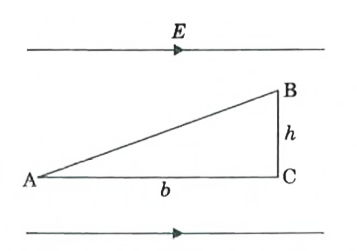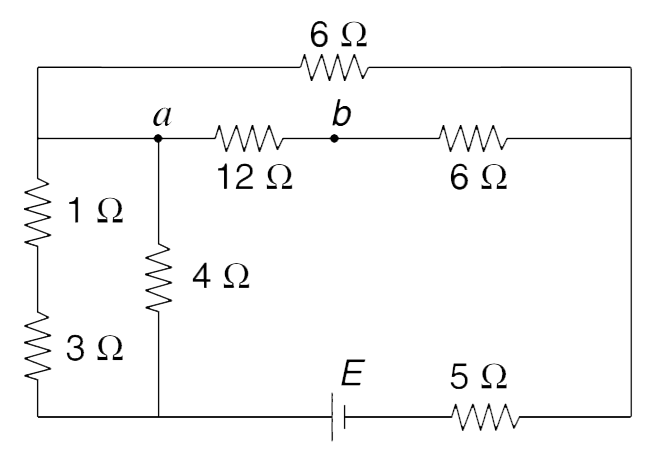A uniform electric field exists in a region of space. Potential at potential O,A,B and C are and and respectively. Alll the cubes shown in fig have side length of 1m. ltbr> (a). Find
(b). Find the smallest distance of a point from O where the potential is

The correct Answer is:(a).
(b)
Step by step video, text & image solution for A uniform electric field exists in a region of space. Potential at potential O,A,B and C are V_(0)=0 and V_(A)=-1V,V_(B)=-6V and V_(C)=-3V respectively. Alll the cubes shown in fig have side length of 1m. ltbr. (a). Find V_(P)-V_(Q) (b). Find the smallest distance of a point from O where the potential is -2V by Physics experts to help you in doubts & scoring excellent marks in Class 12 exams.
Updated on:21/07/2023Topper's Solved these Questions
- ELECTROSTATICSBOOK - ARIHANTCHAPTER - ELECTROSTATICSEXERCISE - Level 3
59 Videos
- ELECTROSTATICSBOOK - ARIHANTCHAPTER - ELECTROSTATICSEXERCISE - Level 3
59 Videos
- ELECTROMAGNETIC INDUCTIONBOOK - ARIHANTCHAPTER - ELECTROMAGNETIC INDUCTIONEXERCISE - Level 3
12 Videos
- GEOMETRICAL OPTICSBOOK - ARIHANTCHAPTER - GEOMETRICAL OPTICSEXERCISE - Level 3
9 Videos
Similar Questions
A circuit has a section ABC if the potential at point A,BandC are V1,V2andV3 respectively , calculate the potential at point O

View SolutionA uniform electric field E exists in a region of space. Refer to the given figure for the location of three points A, B and C.

Find: (a)VB−VA (b)VC−VA
View Solution
Knowledge Check
A uniform electric field exists in x−y plane. The potential of points A(−2m,2m),B(−2m,2m) and C(2m,4m) are 4V,16V and 12V respectively. The electric field is
A(4ˆi+5ˆj)VmB(3ˆi+4ˆj)VmC−(3ˆi+4ˆj)VmD(3ˆi+4ˆj)VmA uniform electric field E0 exists in a region at angle 45∘ with the x - axis. There are twom point A(a,0)andB(0,b) having potential VAandVB, respectively, then
 .Aa<bBa>bCa>bDa=b
.Aa<bBa>bCa>bDa=bAn electron traveling in a uniform electric field passes from a region of potential V1 to a region of higher potential V2. Then
 Ano change takes place in velocity component parallel to interface of two regions.Bdirection of its motion remains unchanged but speed increasesCdirection of its motion may charge but spped must be decreasedDdecrease in kinetic energy is proportional to √V2−V1.
Ano change takes place in velocity component parallel to interface of two regions.Bdirection of its motion remains unchanged but speed increasesCdirection of its motion may charge but spped must be decreasedDdecrease in kinetic energy is proportional to √V2−V1.
Shown a part of an electric circuit, The potentials at the points a,b,and c are 30V,12V,and 2V respectively.Find the currents through the three resistors.

View SolutionIn the circuit shown in the figure, the potential difference between points aandb is Va−Vb=4V. Find the emf, E of the battery.

View SolutionThree capacitors C1,C2 and C3 are connected as shown in, The potentials of P,Q, and R are V1,V2, and V3, respectively. Find the potential V0 at the functionO.
 .
.
View SolutionIn uniform electric field E=10N/C, find

a. VA−VB , b. VB−VC
View SolutionIn figure two points A and B are located in a region of electric field . The potential difference VB−VA is

View Solution
